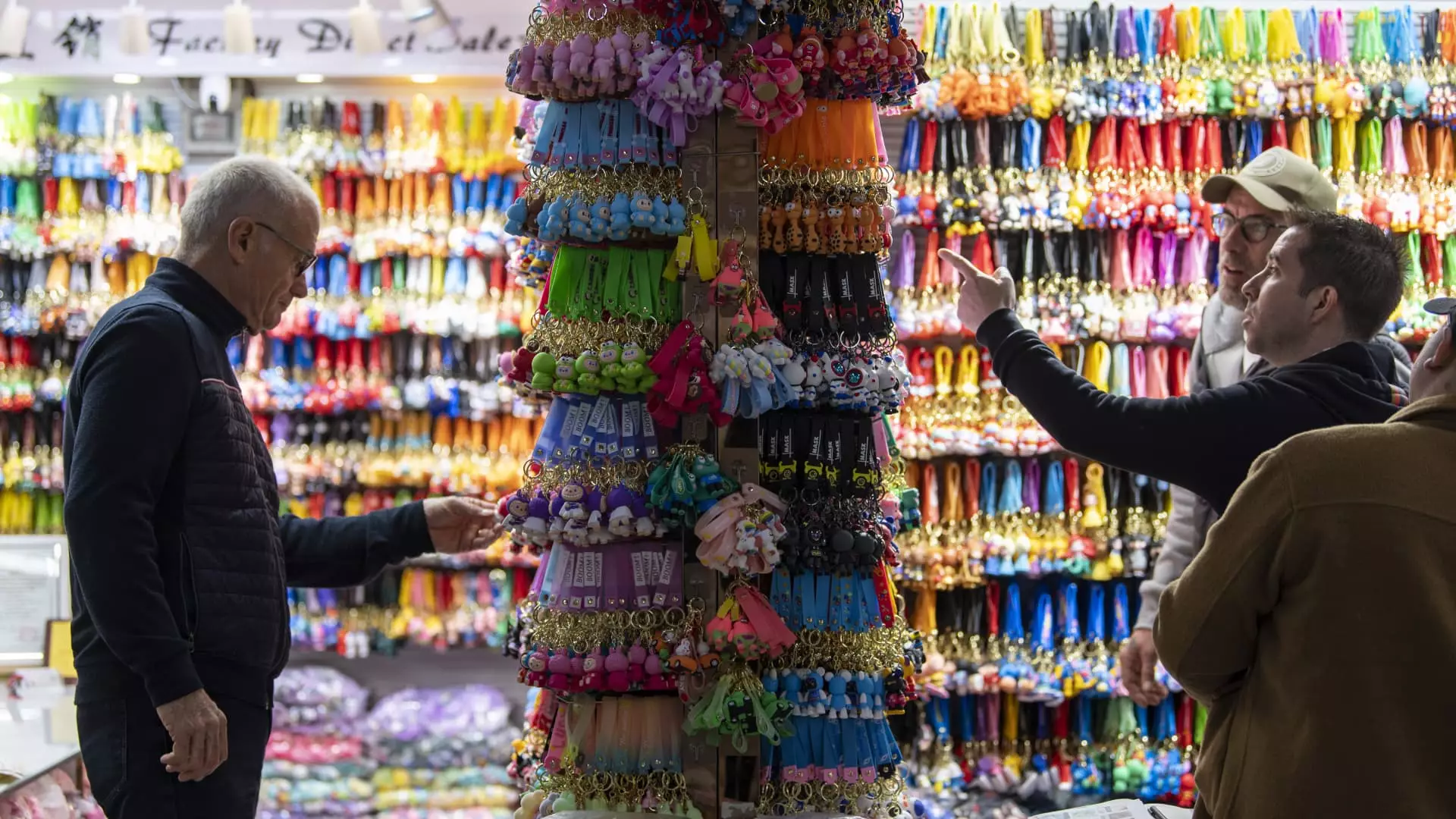In recent years, the phenomenon popularly termed “Christmas creep” has ushered holiday cheer onto retail floors earlier than ever. As consumers eye festive decorations and seasonal merchandise long before Thanksgiving, retailers scramble to optimize their sales opportunities during this lucrative stretch. However, the reality for these retailers this holiday season, particularly in 2023, is fraught with challenges posed by unforeseen economic factors—primarily shifting tariffs on imports from China resulting from the U.S.-China trade tensions.
This year’s Christmas shopping season isn’t just about delightful holiday products; it teeters on the edge of uncertainty. The introduction of high tariffs—ranging up to 145%—on Chinese imports has created a ripple effect throughout the supply chain. U.S. retailers, caught in a bind, are trying to streamline operations amid these staggering costs, leading many to reconsider their purchasing strategies. If reliance on Chinese suppliers becomes untenable, the holiday season may reach our shelves with a disheveled appearance, leaving consumers frustrated.
Supply Chain Disruptions: A Grinch-Like Threat
When the tariff increases were initially announced, many U.S. retailers hit the brakes on orders from their Chinese suppliers, fearing economic backlash. This defensive maneuver derived from an urgent need to assess the financial implications of the tariffs. Cameron Johnson, a senior partner at Tidalwave Solutions, articulates the pressing anxiety among retailers, stating that if production doesn’t kick off swiftly, the chances of entering the peak shopping periods—Thanksgiving and Christmas—smoothly diminish. The disruptive consequences extend beyond mere retail; they reverberate throughout the entire supply chain, impacting upstream suppliers like steel manufacturers and even raw materials providers.
What emerges from this precarious situation is the potential for extended delays and disruptions. The infrastructure supporting product delivery—from manufacturing plants to shipping vessels—is on the verge of collapse. As retailers halt orders, factories may soon find themselves in a position where operations come to a complete standstill. The intertwining of factories, transporters, and stores creates a domino effect where one hiccup leads to a systemic failure, making it increasingly difficult to resume regular production flows.
The Timeline Crunch: A Race Against the Clock
The timeline for traditional holiday shopping is stark—retailers require a lead time of several months to ensure products are available on store shelves for eager consumers. Renaud Anjoran, CEO of Agilian Technology, explains that for electronic goods, which constitute a substantial portion of holiday sales, timely production and shipping is critical. Freight schedules need to be recognized long in advance to account for customs clearance—an aspect often overlooked by consumers. The timeline for deliveries becomes intricate, with a race against the clock unfolding to meet increasing shopping demands.
Despite attempts at frontloading—an uptick in exporters sending goods in anticipation of tariffs—recent data indicate that this flurry of activity is losing momentum. Shipping records reveal a potential stagnation, with canceled shipments rising sharply. This decline is not just numbers on a page; it indicates a diminishing trust in China’s ability to deliver on U.S. orders amidst mounting tariffs and trade negotiations. The window of opportunity for retailers to stockpile inventory is quickly closing, exacerbating fears of empty shelves during the height of the shopping season.
Navigating Uncertainty: A Strategic Rethink
With uncertainty looming, U.S. manufacturers are prompted to rethink their strategies in navigating this crisis. Some businesses are demonstrating a partially optimistic outlook, cautiously resuming orders in anticipation of potential tariff relief. As some corporations experiment with smaller orders—hoping to influence price stability—an intricate gamble unfolds. Is it wise to place orders now, or will the tariffs eventually be abolished, resulting in losses on previously placed orders?
Companies like Walmart and Target have announced continued support for their production partners, allowing some factories to resume activity. In the intricate maze of retail, where each order influences an expansive web of suppliers, production lines must remain fluid and adaptable. Such flexibility might be the remedy needed to alleviate economic friction while simultaneously addressing consumers’ appetite for holiday goods.
While celebrating the holiday season offers joy and camaraderie, the backdrop of tariff-related chaos reveals an ineffable tension. With every ornament hung, there lurks an economic uncertainty that could dampen the spirit entirely. As retailers tread carefully across an unstable landscape, the question remains: Will they overcome the holiday hurdles, or are we witnessing the unfolding of a Christmas commercial calamity?

